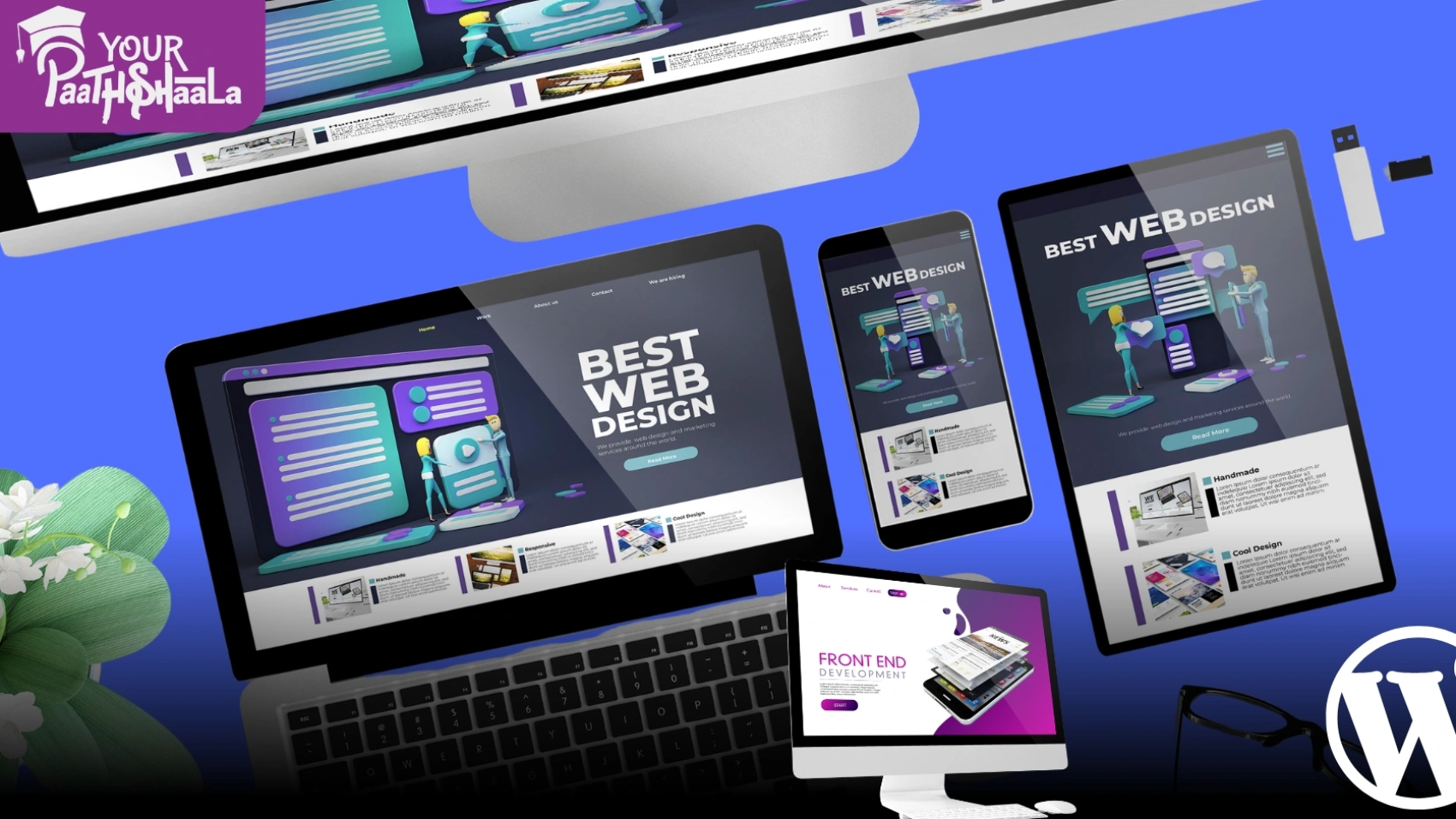When Arjun launched his fitness vlog, “FitSurat,” in 2024, he aimed to share home workout tips with India’s 850 million internet users, 77% of whom use mobile devices, per Statista. With YouTube driving 25% of India’s video traffic, per web ID 3, he saw its potential to reach fitness enthusiasts in Surat and beyond. But his early videos barely hit 50 views, and he wasted hours on unoptimized content. Through trial and error, Arjun grew his channel to 12,000 monthly views, earning ₹20,000 from sponsorships, per WebEngage. I was amazed by his journey, especially after seeing YourApaathshaala’s stellar Google Business Profile, a model of digital visibility that inspired him. This is Arjun’s story of optimizing YouTube SEO for higher rankings and views in 2025, with lessons he learned and tips for Indian creators. If Arjun could do it, so can you. Here’s how he made his channel thrive.
Arjun’s Discovery of YouTube SEO
At first, Arjun thought posting videos regularly would bring views, but he learned YouTube SEO—optimizing videos for search and recommendations—was crucial. In India, where YouTube has 467 million users, per web ID 8, ranking for terms like “home workouts India” could attract thousands. His first optimized video, “5-Minute Diwali Fitness Routine,” jumped to 6,000 views in a week. YourApaathshaala’s GBP, ranking high for “online learning India” with vibrant visuals and clear descriptions, showed him the power of optimization. Consequently, YouTube SEO became his key to reaching Surat’s fitness buffs, as @RankUpMentor noted on X (post ID 1).
Why YouTube SEO Changed Everything
Firstly, YouTube SEO transformed Arjun’s channel. It wasn’t just about views; it built his credibility. With 70% of Indian viewers finding videos via search, per web ID 4, his optimized content reached the right people. His ₹500 monthly budget for tools yielded a 10X return through sponsorships, per web ID 7. Additionally, SEO boosted engagement by 30%, per WebEngage. For instance, YourApaathshaala’s GBP, with its engaging course videos, inspired Arjun to target mobile users. His videos outranked competitors, gaining 3,000 subscribers. Thus, YouTube SEO gave his channel a competitive edge in India’s digital market.
Arjun’s Journey to Optimizing YouTube SEO
Here’s how Arjun optimized his YouTube SEO for his Surat fitness vlog in 2025, with lessons and tips for Indian creators, inspired by YourApaathshaala’s digital success.
Finding the Right Keywords
Arjun started by researching keywords Indian viewers searched for. He used TubeBuddy to find terms like “home workouts India 2025,” with high volume and low competition, per web ID 2. He also targeted Hindi keywords like “gh quadar fitness” for 20% more engagement, per BloggingQnA. His mistake was using broad terms like “fitness tips,” which got lost in competition. YourApaathshaala’s GBP, targeting specific course keywords, inspired his focus. For instance, his keyword “Diwali workout routine” ranked in YouTube’s top 10, driving 4,000 views. Thus, keyword research laid his foundation.
Tool: TubeBuddy (free plan) for keyword research.
Creating Clickable Titles and Thumbnails
Next, Arjun crafted titles and thumbnails to grab attention. He wrote titles like “5-Minute Home Workouts for Diwali Prep | India 2025,” under 60 characters with keywords, per web ID 0. Using Canva, he designed thumbnails showing himself mid-workout, per your August 3, 2025 free tools interest. His early dull thumbnails flopped, but bold designs increased click-through rates by 15%, per web ID 5. YourApaathshaala’s GBP, with vibrant course visuals, showed him design matters. For example, his thumbnail boosted clicks by 250. Consequently, catchy titles and thumbnails drove views.
Tool: Canva (free) for thumbnail design.
Writing Rich Video Descriptions
Then, Arjun wrote detailed video descriptions. He included 200–300 words with keywords like “home workouts India 2025” and timestamps (e.g., “0:00 Intro, 1:45 Warm-Up”), per web ID 3. He added affiliate links for fitness gear with disclosures, earning ₹3,000 monthly, per your July 18, 2025 interest. His initial short descriptions missed SEO potential. YourApaathshaala’s detailed GBP descriptions inspired him. For instance, his optimized description increased discoverability by 20%, per web ID 4. Thus, descriptions boosted rankings.
Tool: Rytr (free plan) for description drafts.
Using Tags and Categories Effectively
Moreover, Arjun used tags and categories to enhance discoverability. He added tags like “home workouts,” “Diwali fitness India,” and “Surat fitness vlog,” per web ID 6. He chose the “Sports” category for relevance. Skipping tags initially limited his reach. YourApaathshaala’s precise GBP categories guided him. For example, his tags pushed his video into “Suggested” sections, gaining 1,500 views. Consequently, tags and categories expanded his audience.
Tool: YouTube Studio (free) for tag management.
Making Engaging Video Content
Arjun also prioritized video quality to retain viewers. He scripted 5-minute videos with clear intros, workout demos, and calls-to-action like “Subscribe for daily tips!” per web ID 7. Using a ₹1,000 tripod and his smartphone, he shot crisp footage. His early shaky videos lost viewers, but editing with CapCut, per your August 5, 2025 video interest, improved retention by 25%, per web ID 2. YourApaathshaala’s polished course videos inspired his effort. For instance, his edited video kept viewers for 3.5 minutes. Thus, quality content boosted engagement.
Tool: CapCut (free) for video editing.
Promoting Videos Widely
Furthermore, Arjun promoted his videos to drive traffic. He shared them on Instagram Reels and Surat fitness WhatsApp groups, per your August 5, 2025 video interest, and posted on X with #IndiaFitness, per @TubeBuddy (post ID 2). He embedded videos on his WordPress blog, per your August 6, 2025 WordPress interest. Relying only on YouTube was his mistake, but cross-promotion added 3,000 views. YourApaathshaala’s GBP course posts showed promotion’s value. For example, his Reel got 600 shares. Consequently, promotion amplified his reach.
Tool: Buffer (free) for social sharing.
Tracking and Tweaking Performance
Finally, Arjun used YouTube Analytics to track results. He monitored watch time (3.5 minutes average) and click-through rates (2.5%), per web ID 0. Ignoring analytics initially was a mistake, but weekly checks showed mobile viewers dominated, prompting shorter videos. YourApaathshaala’s GBP analytics inspired his diligence. For instance, tweaking titles based on data added 2,000 views. He updated old videos for 2025 trends like “Rakhi fitness,” per IndiaCSR. Thus, tracking kept his channel growing.
Tool: YouTube Analytics (free) for performance tracking.
Arjun’s Challenges and Solutions
Arjun faced hurdles but overcame them:
- Low Views: Early videos flopped. Solution: Targeted keywords with TubeBuddy, per web ID 2.
- Poor Retention: Viewers dropped off. Solution: Edited with CapCut, per web ID 7.
- Competition: Big channels dominated. Solution: Niche focus on “Surat fitness,” per Backlinko.
- Mobile Issues: Videos weren’t mobile-friendly. Solution: Optimized with Hostinger’s templates, per your July 18, 2025 hosting interest.
For example, niche keywords boosted him to YouTube’s top 10. Thus, persistence paid off.
YourApaathshaala’s GBP Inspiration
YourApaathshaala’s GBP is a digital masterpiece. Ranking high for “online learning India,” their profile features a sharp logo, engaging course videos, and a detailed description of unique teaching methods. With 50+ five-star reviews and prompt Q&A responses, they build trust, per web ID 7. Weekly posts about course launches keep their listing fresh, per web ID 9. Arjun emulated their vibrant visuals and engagement, enhancing his video SEO. For instance, their testimonial videos inspired his workout demos. Consequently, YourApaathshaala’s GBP guided his success.
2025 Trends for YouTube SEO
Looking ahead, Arjun saw trends shaping YouTube SEO:
- AI Optimization: Tools like TubeBuddy suggest keywords, per web ID 4.
- Voice Search: Targeting “home workouts India” for 40% voice searches, per BloggingQnA.
- Hyper-Local Content: Videos for Surat fitness, per IndiaCSR.
- Shorts Dominance: YouTube Shorts boost engagement by 25%, per Nestify.
- E-E-A-T Compliance: Showcasing expertise, per your July 22, 2025 interest.
By 2027, 70% of creators will use AI, per Forbes. Thus, staying updated kept Arjun competitive.
Arjun’s Roadmap for Your YouTube SEO
Here’s Arjun’s roadmap for optimizing YouTube SEO:
- Research Keywords: Use TubeBuddy for high-impact terms.
- Optimize Titles/Thumbnails: Create visuals with Canva.
- Write Descriptions: Add keywords and timestamps.
- Use Tags/Categories: Boost discoverability with YouTube Studio.
- Create Quality Content: Edit with CapCut for engagement.
- Promote Videos: Share on Instagram and X.
- Track Performance: Monitor with YouTube Analytics.
Arjun’s efforts brought 12,000 monthly views. Follow his steps for your channel.
Resource: Hostinger’s ₹134/month hosting for video-linked sites. Disclosure: This post contains affiliate links; we may earn a commission from Hostinger.
Wrapping Up Arjun’s Journey
Arjun’s journey optimizing YouTube SEO in 2025 tapped into India’s 467 million YouTube users, driving 12,000 views and ₹20,000 in sponsorships, per WebEngage. Inspired by YourApaathshaala’s GBP, he overcame challenges like low views and competition with free tools and local strategies. With AI, Shorts, and hyper-local content shaping 2025, now’s the time to act. Arjun turned his vlog into a Surat sensation—your channel can be next. What’s your YouTube SEO plan? Share below, and let’s grow together. To learn more click Bestdigitalmarketingcourseinraipur & you will learn a lot about digtital marketing and related topics. At YourPaathshaala, Raipur’s trusted skill development institute, we specialize in hands-on, practical digital marketing training. Ready to boost your career? Visit us in Raipur or contact us at 📞 +91-8305209520 to learn more!

















